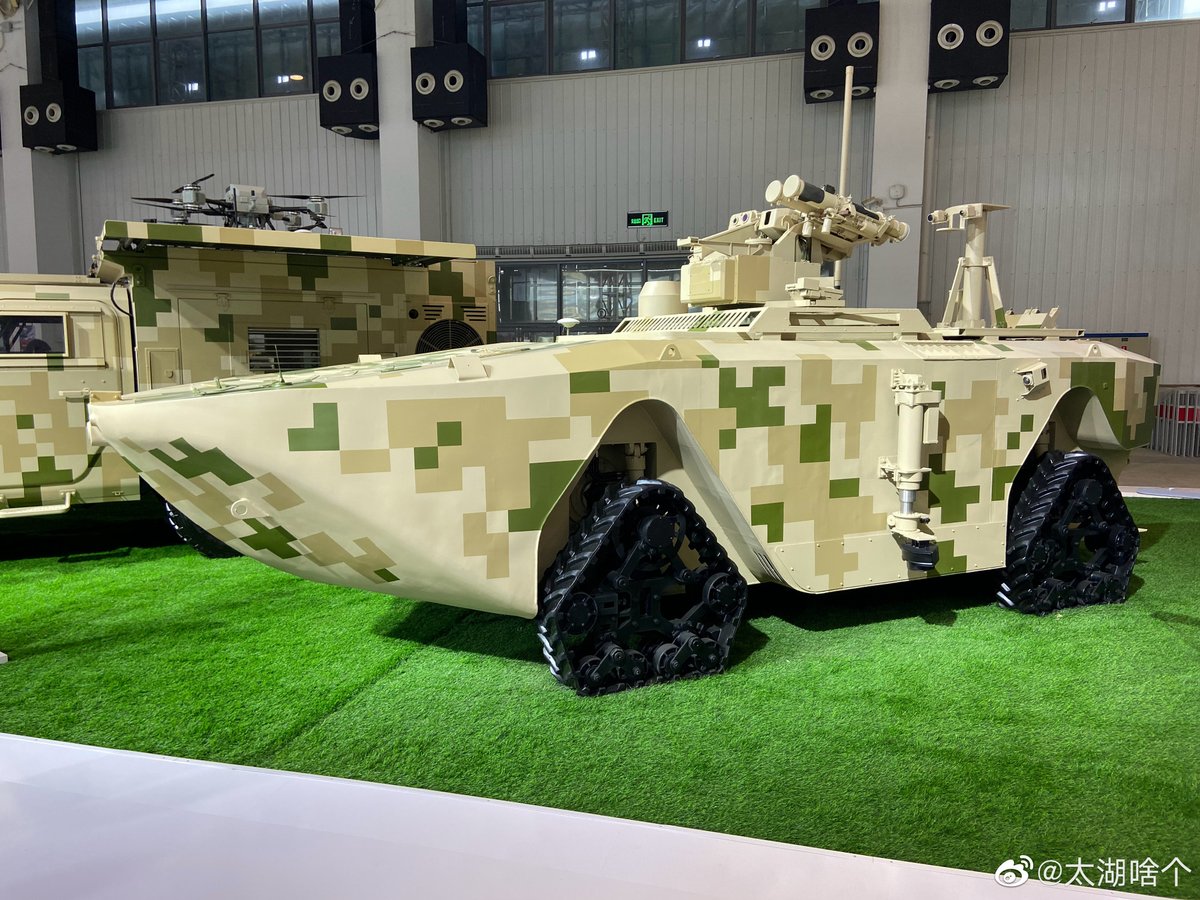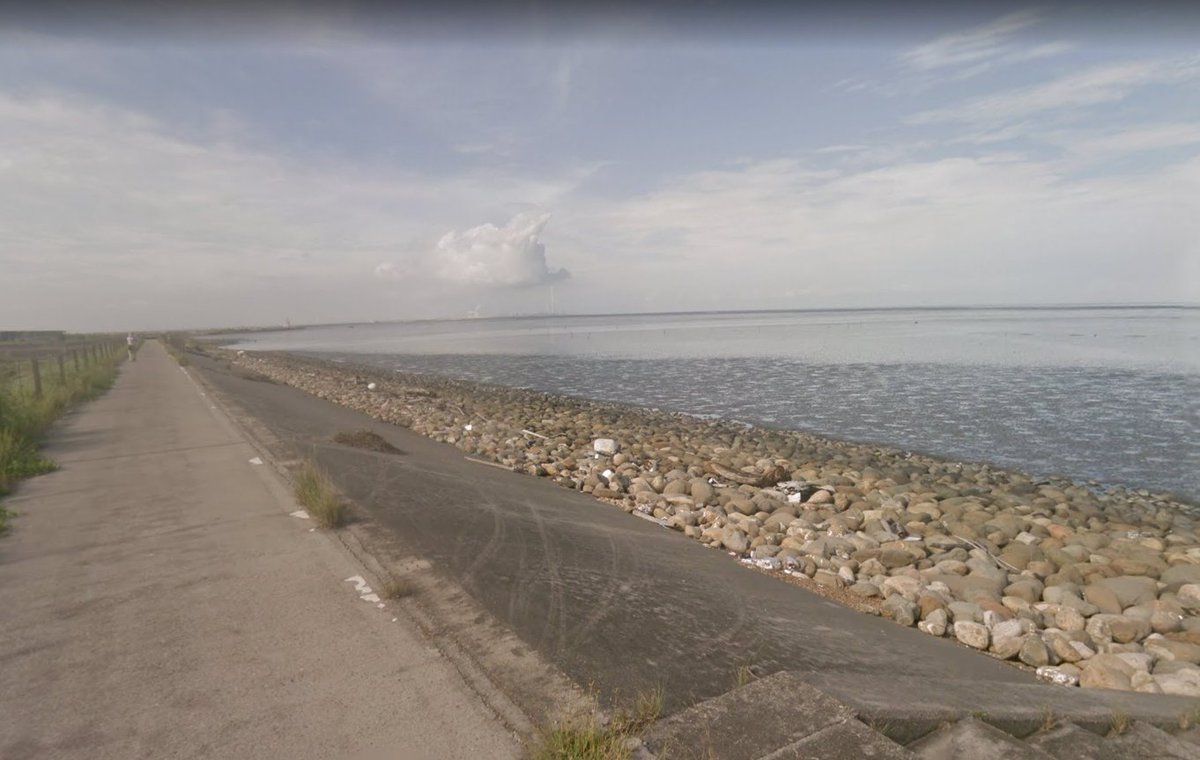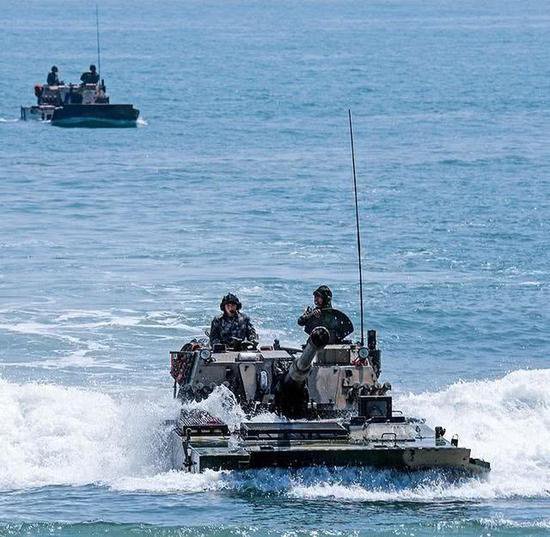This particular UGV can retract its tracks, allowing it to travel on water like a speedboat
On land, its 4 articulated tracks can climb steep angles and clear obstacles
Very useful when you need to climb seawalls with a 40 degree slant
When operational, UGVs like these can prove revolutionary for the PLA Marine Corps (PLAMC)
On the surface, UGVs simply lowers the casualties, so what's so special about it?
The key, is that it lowers the threshold for greenlighting an amphibious landing
The PLAMC Combined Arms Brigade (CA-BDE) is the most basic combat unit, made up of 6000men
Containing combat modules of Battalions
A Brigade commander during the battle planning process would pick and choose these modules (Battalions) and combine them into “Combat Groups”
One of the first decisions to make at the strategic level, during an amphibious operation
Is to chose whether to starve the island out through a naval+air blockade, if naval supremacy is achieved, then success is guaranteed
But it risks outside powers from intervening
The other option, is to simultaneously launch a naval+air blockade, as well as an amphibious landing operation
More risky but faster results
An unique aspect of amphibious warfare, is the inability for the attacking side to retreat
Nor do they have any depth to their offensive zones (designated area where friendly troops can maneuver)
So they are exposed to enemy artillery fire and vulnerable to counterattacks
So, by having the first waves of the landing be spearheaded by UGVs, it lowers the threshold for greenlighting an amphibious operation
Expendable machines means less political backlash too, especially when wars are broadcasted live on twitter
A typical PLAMC amphibious landing operation, comes in 4 steps
Step 1, air & artillery preparatory fire
Step 2, Screening Force lands, acting as the eyes of the CA-BDE and secure beachheads
Map below number 1 are the Screening Force, made up of armored reconnaissance companies
The Screening Forces will utilize UGVs the most
Step 3, will be the Frontline Attack Groups coming ashore
They are usually amphibious armored battalions and assault gun companies, based around the Type-05 amphibious tank
The Frontline Attack Groups are there to engage the enemy head-on, creating gaps within the enemy line
Step 4, will be the Depth Attack Group, they are task with penetrating the gaps created by the Frontline Attack Groups
Once enough depth is created in your offensive zones, then you have more room to cushion against a possible counterattack (CATK)
Once a strong foothold is gained, and port facilities nearby taken
Then the heavy Combined Arms Brigade CA-BDEs will be sent in via Roll-on/ Roll-off ships
All of that won't happen, unless the commander is confident, the first waves of the Screening Forces can withstand high casualties
A problem solved by the expendable nature of UGVs
This is a classic example of a disruptive technology, upending the classical convention of war
As autonomous driving technology develops, a large portion of the amphibious combat groups will be replaced by UGVs
Wars are decided by the industrial capacity of each sides
Isolated islands, who depends on outside resources, will become even easier targets













